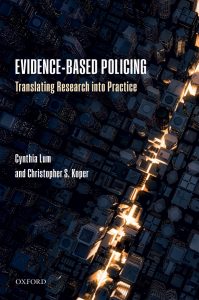Matrix Demonstration Project
Tools:
- Case of Places Form
- Case of Places Guide
- Case of Places Checklist
- Crime Analysis for Operations
- Crime Analysis for Commanders
Important Links:
- Case of Place Example #1 (Suffolk County, NY)
- Case of Place Example #2 (Urban City)
- Case of Place Example #3 (Richmond, VA)
- Case of Place Example #4 (Minneapolis, MN)
- Place-Based Policing, by David Weisburd
- The POP Center
- CEBCP’s one-page research summaries on place-based research
- Situational Crime Prevention
- CPTED Guide
Case of Places
 Studies have found that the majority of crime is geographically concentrated at very small locations. Some studies suggest that as much as 50% of all crime in a city occurs at just 3-5% of addresses and street blocks. Additionally, research finds that these concentrations are stable over time and are influenced by various situational and environmental factors as well as routine activities. Numerous studies have illustrated the utility of focusing police patrol and problem-solving approaches at these locations.
Studies have found that the majority of crime is geographically concentrated at very small locations. Some studies suggest that as much as 50% of all crime in a city occurs at just 3-5% of addresses and street blocks. Additionally, research finds that these concentrations are stable over time and are influenced by various situational and environmental factors as well as routine activities. Numerous studies have illustrated the utility of focusing police patrol and problem-solving approaches at these locations.
Following from this strong body of research, Case of Places is a strategy that focuses detective activities on high-crime places as the investigative unit of analysis, as opposed to persons. There are three principles behind Case of Places:
- Law enforcement agencies should devote as much resources to investigating problem places as they do investigating crime suspects given the concentration of crime at these places.
- Using existing cultural and organizational structures and status surrounding detective work may facilitate a better orientation to place-based policing, as opposed to an ad hoc, special projects approach.
- Place-based policing is a crime prevention concept strongly supported by research. Investigating cases can support place-based policing by facilitating efforts to track the history of crime problems, actors, and police actions at hot spots.
Case folder contents mirror similar investigative processes for people, converting traditional elements of investigative case folders to place-based equivalents. For example, a “suspect” in a traditional detective’s case folder is a person. For Case of Places, the “suspect” might be a group of people, a building, a business, or something in the physical environment. In collaboration with Richmond and Minneapolis Police Departments, we have developed the Case of Place Form, Guide, and Checklist for building case folders for places. You can also read articles describing the general strategy as well as an example of a case of place.


